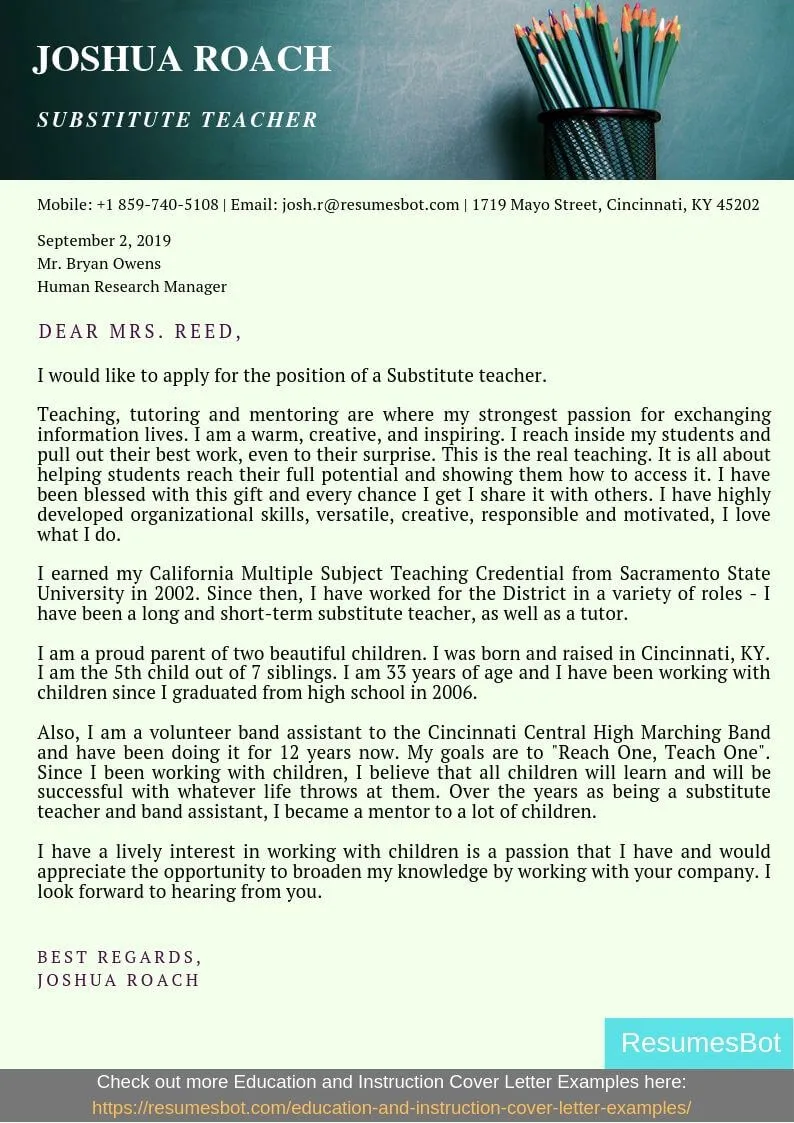Understanding the Purpose of a Cover Letter
A cover letter serves as your introduction to a potential employer, going beyond the basic information in your resume. For a substitute teacher position, it’s your chance to showcase your personality, enthusiasm, and suitability for the role. It allows you to explain why you’re interested in the specific school or district and highlight the skills and experiences that make you an ideal candidate. A well-crafted cover letter can significantly increase your chances of getting an interview, as it demonstrates your communication skills and your understanding of the position’s requirements. It’s a crucial element in your job application package and should be given careful consideration to ensure it makes a positive first impression.
Key Components of a Strong Cover Letter
A strong cover letter is structured and concise, conveying the most important information effectively. It should include a clear header with your contact information, a personalized greeting, and well-structured body paragraphs. The body should express your enthusiasm for the position, highlight relevant skills and experiences, and showcase your adaptability. Tailoring your letter to the specific school or district demonstrates your genuine interest. Conclude with a call to action, such as expressing your availability for an interview, and a professional closing. Proofreading is essential to eliminate any errors in grammar or spelling, ensuring your letter presents you in the best possible light. This structure helps create a compelling narrative that grabs the reader’s attention.
Header & Contact Information
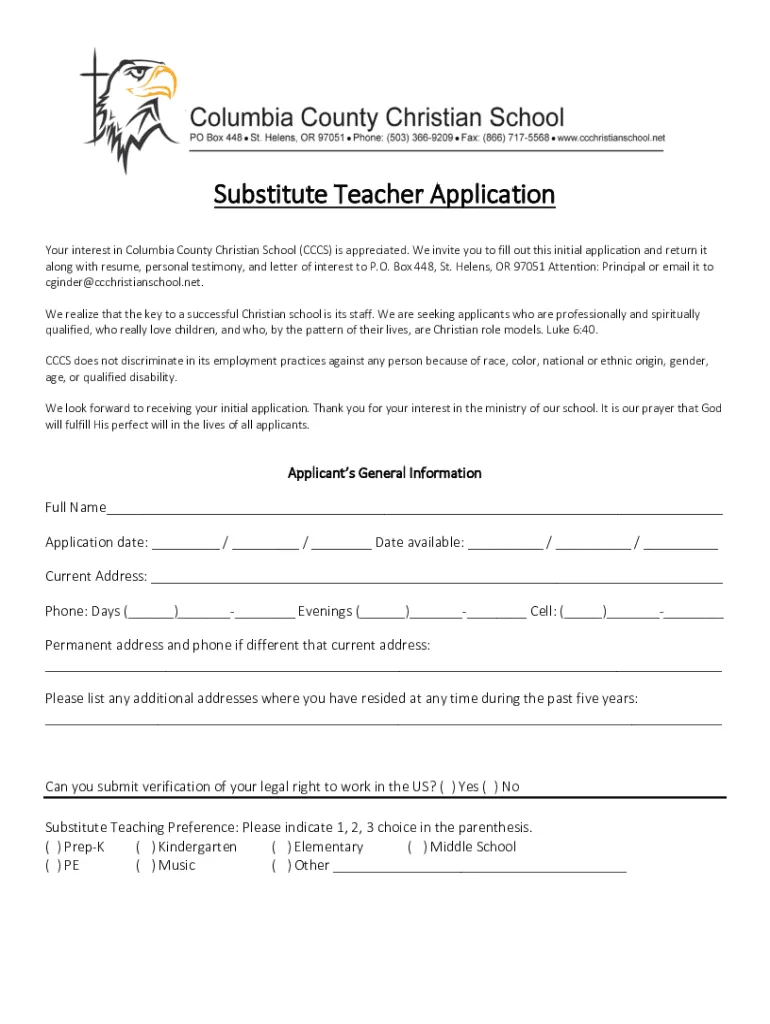
Your header should include your full name, address, phone number, and email address. Make sure the email address sounds professional, avoiding nicknames or informal language. The header should be clearly formatted and easy to read. Place it at the top of the letter, either left-aligned or centered. Including the date is also recommended, as it helps the recipient understand when the letter was written. This ensures the school can easily reach you and confirms the application’s timeliness, presenting a professional image from the start. Double-check all contact details to ensure accuracy to prevent any missed communication opportunities.
Personalized Greeting
Always address the hiring manager or principal by name. Research the school’s website or call the school to find out the correct person to address. Use “Dear Mr./Ms./Mx. Last Name” is appropriate. Avoid generic greetings like “To Whom It May Concern” as they show a lack of effort and personalization. If you are unable to find a specific name, try to find the title of the hiring authority. A personalized greeting makes a strong impression, showing that you’ve taken the time to learn about the school and its leadership. This demonstrates respect and increases the likelihood of your letter being read thoroughly. Furthermore, it builds a connection from the very beginning of the letter.
Body Paragraphs
The body paragraphs are the heart of your cover letter, where you sell yourself to the hiring manager. Each paragraph should focus on a specific aspect of your qualifications. The aim is to create a compelling narrative that explains why you are the perfect candidate for the substitute teaching position. It’s where you will share your enthusiasm, highlight relevant skills and experiences, and showcase your adaptability. Each paragraph should be concise, well-structured, and free of jargon, ensuring the reader can easily understand your message. Aim to maintain a positive tone throughout your writing, and make sure your tone matches the school’s culture.
Expressing Your Enthusiasm
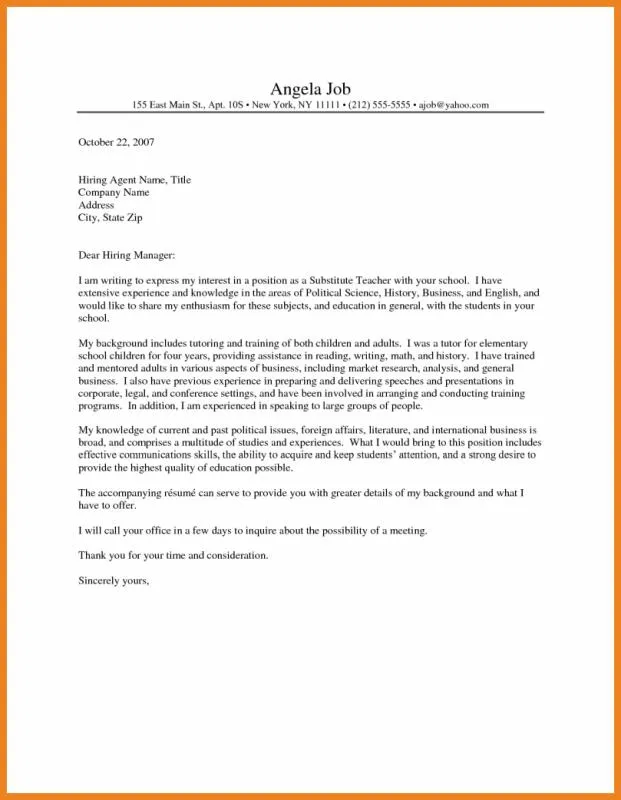
Begin your cover letter with a strong statement of enthusiasm for the substitute teacher position and the specific school. Show genuine excitement and a clear interest in the opportunity. Explain what attracts you to the school district or the particular school, whether it’s their focus on student development, their educational philosophy, or their positive community atmosphere. This opening immediately captures the reader’s attention and sets a positive tone. Mentioning specific programs or initiatives you admire also demonstrates that you’ve researched the school. Share why you enjoy working with students. This enthusiasm will distinguish your application from others and show that you are passionate about education.
Highlighting Relevant Skills & Experience
This is where you describe your skills and experiences that align with the requirements of a substitute teacher. Mention any prior experience working with children, such as volunteering, tutoring, or previous teaching roles. Highlight skills such as classroom management, communication, adaptability, and the ability to work with diverse learners. Provide specific examples to illustrate your abilities. For instance, describe how you successfully managed a classroom of students, or how you adapted your teaching style to meet the needs of different learners. Quantify your achievements where possible, for example, “Successfully managed a classroom of 25 students.” Link these skills and experience directly to the needs of the school, showcasing your suitability for the role.
Showcasing Your Adaptability
Substitute teaching demands high adaptability. In your cover letter, demonstrate your ability to adapt to new environments, different teaching styles, and unexpected situations. Provide examples of times when you successfully handled challenging circumstances, such as covering an unfamiliar subject or managing a difficult student. Emphasize your flexibility and willingness to learn. Show that you are comfortable working with various age groups and diverse learning environments. This shows the school you can handle any challenge thrown your way. You can include how you implement different methods to match the school’s culture. This is critical for a substitute teacher who might be working in several classrooms with different requirements.
Tailoring Your Letter to the School
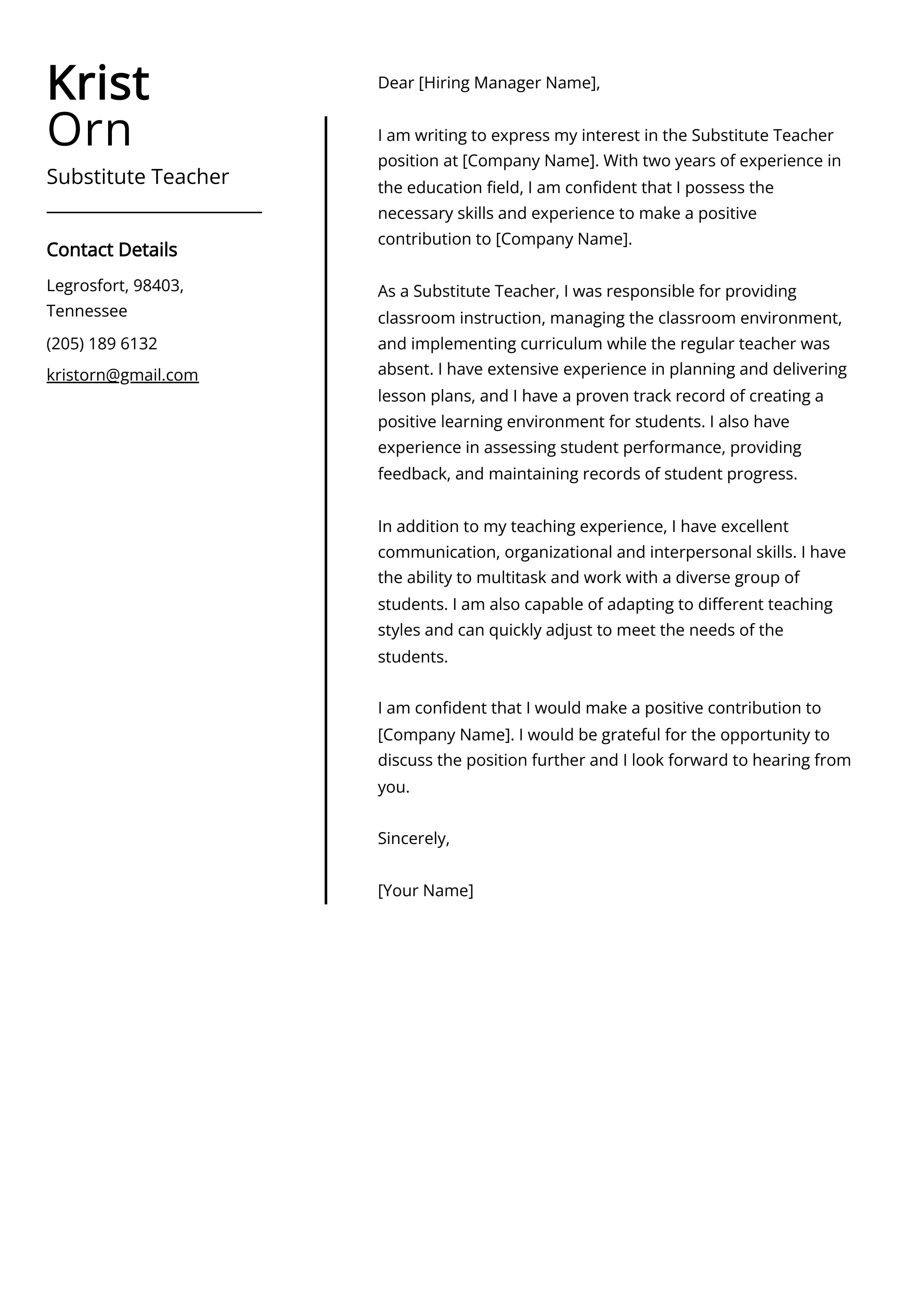
Customize your cover letter to each school to show you genuinely want to work there. Review the job description carefully and identify the specific skills and qualifications they are seeking. Highlight how your experience and skills align with those requirements. Research the school’s mission, values, and any special programs or initiatives they offer. Mention these in your letter to show you are interested in their unique environment. If possible, visit the school’s website and social media pages to learn about their culture. Showing this personalized approach will increase your chances. Demonstrate that you understand the school’s needs and are enthusiastic about becoming part of their team, further increasing your chances of success.
Call to Action & Closing
End your cover letter with a clear call to action. Express your availability for an interview and your eagerness to discuss your qualifications further. Provide your contact information again, ensuring the hiring manager can easily reach you. Thank the hiring manager for their time and consideration. Use a professional closing, such as “Sincerely” or “Best regards,” followed by your full name. Proofread the entire letter one last time to ensure it’s error-free and polished. A strong closing leaves the reader with a positive impression, making them more likely to consider your application and potentially offer you an interview.
Proofreading and Formatting
Before submitting your cover letter, carefully proofread for any grammatical errors, spelling mistakes, or typos. Ensure that the letter is well-formatted, with clear headings, consistent font sizes, and appropriate spacing. A poorly written and formatted cover letter can undermine your application, regardless of your qualifications. Use a professional font, such as Times New Roman, Arial, or Calibri. Maintain a consistent font size throughout the letter. Review the letter with fresh eyes or ask someone else to review it. Pay attention to sentence structure, grammar, and punctuation. Correct any errors to ensure your letter is clear, concise, and professional. Proofreading is the final step in crafting a cover letter that represents you in the best possible light.
Common Mistakes to Avoid
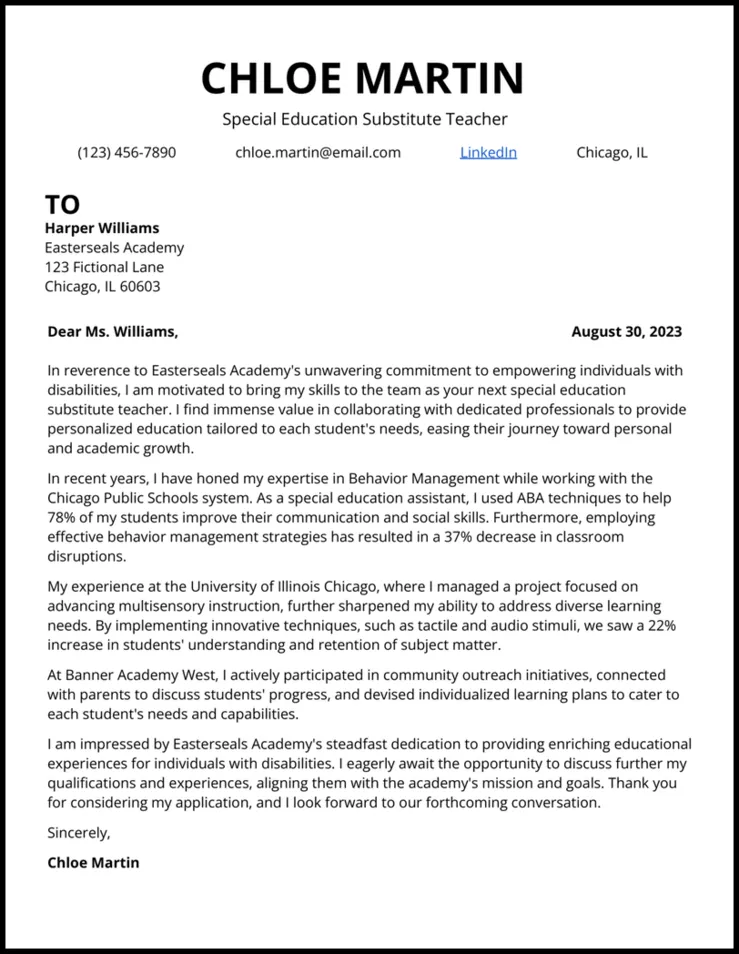
Avoid generic cover letters. Tailor each letter to the specific school or district you are applying to. Refrain from using excessive jargon or overly formal language. Keep the tone professional but approachable. Don’t include irrelevant information. Ensure your cover letter is well-organized, easy to read, and grammatically correct. Avoid discussing salary expectations in your cover letter. Do not go over one page. These mistakes can detract from your application and hinder your chances of securing a substitute teaching position. By avoiding these common pitfalls, you can increase your chances of making a strong impression and getting your foot in the door.
